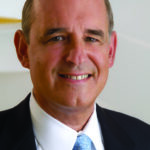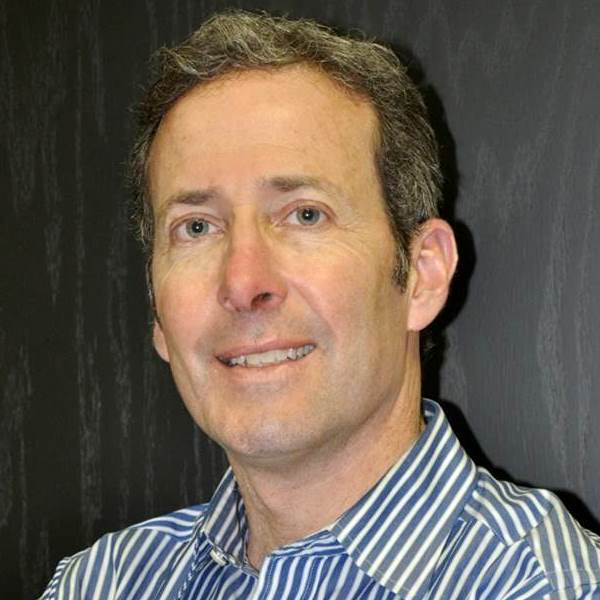From the Corner Office: John Graham, American Society of Association Executives

This month’s Corner Office profile falls on John H. Graham, president & CEO of the American Society of Association Executives (ASAE), a Washington-based membership organization of more than 22,000 association executives and industry partners representing more than 11,000 organizations. ASAE members manage leading trade associations, individual membership societies and voluntary organizations across the United States and in 50 countries around the world.
Association Adviser: John, ASAE organizes one of the largest and most eagerly anticipated annual conference for association leaders. What’s the mood been like in terms of attendance and enthusiasm for next month’s ASAE Annual Meeting & Expo in Los Angeles?
John Graham, CAE, FASAE: Attendance is tracking ahead of the last few years, which is consistent with what we’ve seen for our other live events. If face-to-face events are a reliable indicator of association health, then things are certainly trending up. In March, our Great Ideas Conference in Colorado Springs saw a 20 percent increase over last year and our Association International Conference in Washington had a 10 percent increase. Even our Annual Technology Conference in February was up 10 percent before we had to cancel it due to the record blizzard that hit Washington, D.C. over the planned dates.
![]()
|
AA: So, are you giving association event planners the all-clear sign?
JG: I wouldn’t go that far. Things are improving, but the main difference we’re seeing in 2010 versus a few years ago is that everyone’s delaying their commitment decision to the very last minute. We had to add a few new wrinkles this year, which I’ll get to in a minute. You can’t always go back to the same old way of doing things.
AA: I understand you’ll be adding a virtual component to the ASAE Annual Conference this year. Can you tell us more?
JG: All three general sessions and 20 other sessions will be streamed live throughout the conference. It’s the first time we’re trying it, but we did the research and we’re very confident about it. Attendees will be able to access live, on-site presentations and events remotely throughout the duration of the meeting. The focus will be on social media, web innovation, marketing, membership, governance, board relations and leadership.
JG: Three things come to mind: First, the biggest game changer has been the advent of social media and mobile technology. This will alter the landscape in ways we haven’t even been thinking about yet. People still want to congregate, but you’ve to be more creative about how you get them together. Now it’s all about: “I want what I want when I want it and how I want it.” There are so many ways to send and receive member communication. Just sending out a magazine and some membership promos through the mail isn’t going to get it done. It’s a lot more complicated and a lot more difficult.
Second, we’re still digging ourselves out of the worst downturn in a generation. Associations generally are lagging indicators of the economy, so we may not be out of the woods yet. I don’t think associations will ever be able to go back to the days of assuming an automatic membership renewal just because you send out a nice magazine and put on a few conferences. You’ve got to work a lot harder to earn a member’s trust.
Third, there’s been a continued migration from print to digital of content and distribution. The last recession, combined with amazing advances in technology, are really driving members (and advertisers) online.
AA: Can you tell us more about the membership value proposition in the ‘new normal’ era as you put it?
JG: In my first five years at ASAE, as long as you were showing members some kind of ROI, you could pretty much count on them renewing. It’s been that way for a very long time at many associations. Now you can’t assume anything in this era of “mass customization.” People might want certain aspects of the membership value package. They’re starting to look at individual components of the membership package—just events, or just the education programs or just the networking, for instance. Members really want to customize the relationship they have with you. You’ve really got to work that “relationship value piece” and do it every day.
AA: Are the specific challenges with respect to recruiting and retaining younger members?
JG: We live in an instant gratification “experiential economy” to borrow a phrase from author James Gilmore. As I said before, younger people are not blindly jumping to join associations when they have so many other ways of networking with their peers and obtaining information about their profession. They’re pickier and they don’t like a one-size-fits-all membership experience. They really want to customize the relationship they have with you and it’s got to be on their own terms.
Click tracking, data mining and monitoring what people are saying about you online. Those are big steps for many associations and as a profession we’ve got a lot to learn. In many ways we have to start thinking like the media and consumer goods companies. Associations have been late coming to the party, but the party is here. Many associations still operate in an old-media mindset.
AA: Speaking of networking, do you see social media as complementary or competitive with associations and their communication objectives?
JG: Technology is really encouraging a splintering of audiences into smaller and smaller communities. Again, you can’t get by with a one-size-fits-all mentality. And that’s tough for many associations who serve large industries or professions. For instance, 50 years ago, everyone in the medical profession belonged to the American Medical Association (AMA). Over time, doctors started breaking off into their various specialties—cardiology for example—and now even those specialties could have nine subgroups, i.e. communities.
Thanks to the new low-cost, high-speed technology tools everyone has, it doesn’t take much to set up a network/community on Facebook, LinkedIn, Twitter, for instance. Smart associations realize they aren’t the only place members can go to network and congregate with their peers. They’re learning to embrace the new technology to keep in touch with their members in real time and help them create meaningful subgroups and communities that still have ties to the main association.
AA: What are the most important things associations should be doing in terms of member service?
JG: Having a culture in which people own a problem and then follow through with a solution. You need a culture of honestly trying to solve problems. Unlike 15 years ago, a lot more members have a self-help mindset. They go online for general information. Member service is now for special requests and real problem solving. If done well, it’s where real relationships get built.
AA: What will the association marketplace look like five to seven years from now?
JG: It’s all going to evolve. We’re learning what we know and what we don’t know and it’s anyone’s guess as to how Washington policy is going to affect the tax exempt status of many associations. But, with all this technology and the pressure for non-dues revenue, we’ve still got to keep our core competencies top of mind—and that’s all about educating and serving members and helping them connect.
AA: Are there any thought leaders you’d recommend association leaders follow to guide them through an uncertain future?
JG: Yes. Read The Experiential Economy by James Gilmore and Getting Change Right by Seth Kahan. We live in a world of ambiguity and constant change. Association leaders and their staffs must be comfortable in this new environment. This is the new normal. What we knew even two years ago no longer applies. You can’t always anticipate change. Sometimes it just hit you square in the face, and you and your leadership team have to be able to adapt.


